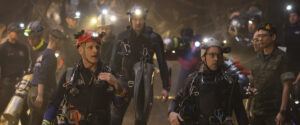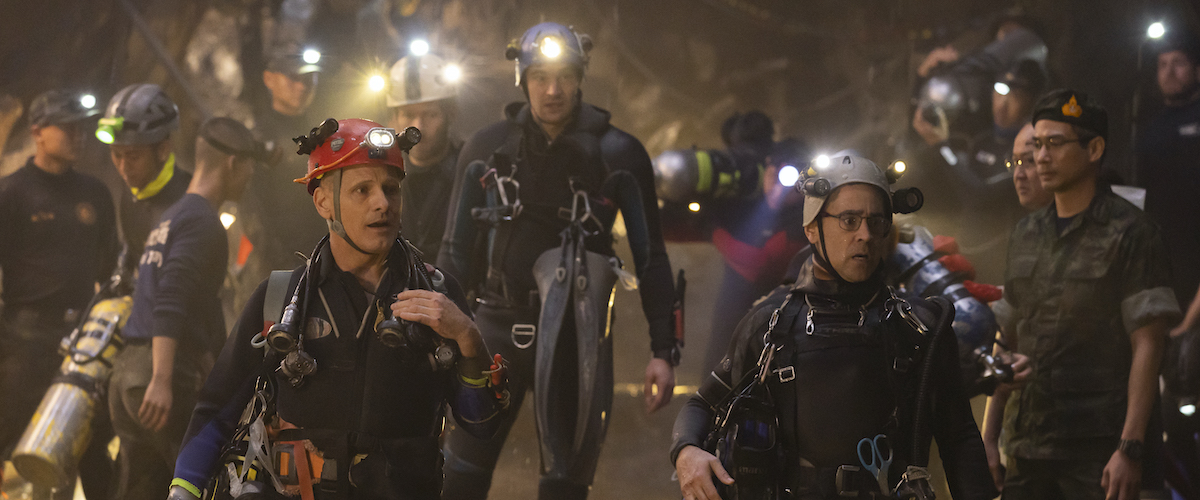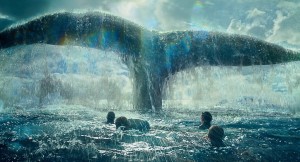Thirteen Lives
Posted on August 4, 2022 at 5:17 pm
B +| Lowest Recommended Age: | High School |
| MPAA Rating: | Rated PG-13 for some strong language and unsettling images |
| Profanity: | Some strong language |
| Alcohol/ Drugs: | None |
| Violence/ Scariness: | Extended peril and tense rescue operations, characters injured and killed |
| Diversity Issues: | Race and economic/nationality status issues |
| Date Released to Theaters: | August 5, 2022 |

“Rescue” is a fine documentary about the courage and dedication of the rescuers, especially the British and Australian volunteer race rescue divers who came up with an idea so dangerous and crazy it could only become an option when every other possibility was out of the question. Ron Howard’s feature film has excellent performances from Colin Farrell, Viggo Mortensen, and Joel Edgerton as the divers and skillful use of the camera to put us inside the narrow, claustrophobic passages of the cave with no visibility and terrifyingly swift currents. Like his best film which also plays into triskaidekaphobian fears, “Apollo 13,” this is a tick-tock tension movie, with smart people trying to solve dire, unprecedented problems under excruciating time pressure.
It is June 2018. The boys are playing soccer and talking about a SpongeBob birthday cake at an upcoming party. They ride their bicycles to the cave, with the “Sleeping Princess” shrine at the entrance. There should be plenty of time before monsoon season closes the cave until the fall. But there is not. A drenching rainstorm cuts off the exit and slowly, as the parents come looking for the boys, it is clear they are trapped inside.
The Thai Navy SEALS arrive, well-trained and courageous. But rescuing people from an ocean is very different from the highly specialized rescues of the volunteer cave divers. It turns out there is a small, dedicated, endlessly skillful and endlessly courageous group of people who are cave diving rescuers, including Rick Stanton (Viggo Mortensen), John Volanthen (Colin Farrell), and joining later, Richard “Harry” Harris (Joel Edgerton).
Given how much of the story is under murky water in a dark cavern filled with sharp points and tiny, twisty passages, Howard does a very good job of keeping us on top what is going on, how much time has passed, and how far we are from the tiny, precarious shelf where the boys and their coach are perched. For those who are not familiar with the details (though likely everyone is aware of the miraculous outcome) there are some dramatic twists and surprises to accompany the understated but immensely powerful story of the rescue divers. Americans will enjoy the classically British understatement that only underscores the breathtaking heroics of the story and the modesty and gratitude of the boys, the coach, and their families. The unquenchable hope, the remarkable resilience, and the cooperation of all involved, including the farmers who agreed to have their year’s crops wiped out so that water could be diverted from the cave are a story of uplift and the best that humanity has to offer.
Parents should know that this is a tense depiction of a dire real-life rescue involving children with some very high-risk choices. Characters are injured and killed and there is some strong language.
Family discussion: How did the group make the decision to take such a high-risk option? What were the biggest obstacles to the rescue other than the physical challenge of the water in the cave? What circumstances would make you fly halfway around the world to help people you’ve never met?
If you like this, try: the National Geographic documentary “The Rescue” and Ron Howard’s “Apollo 13”



